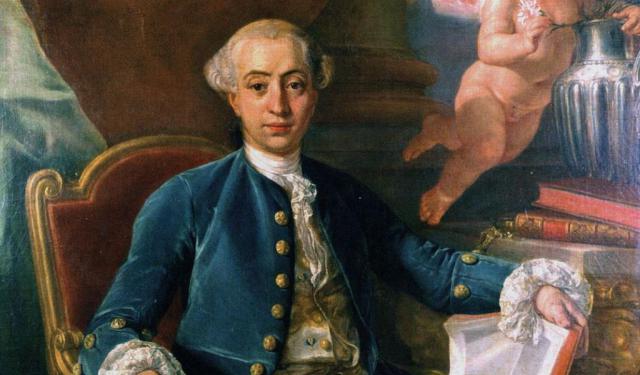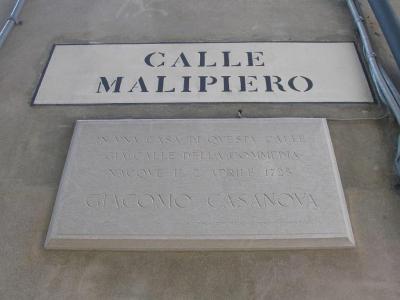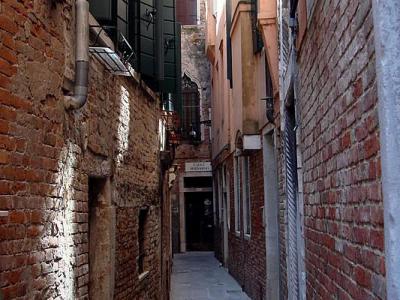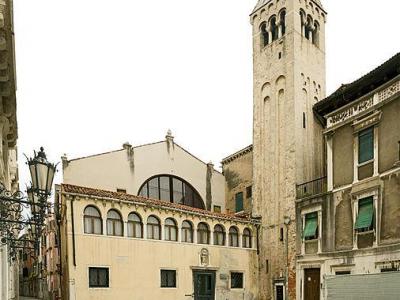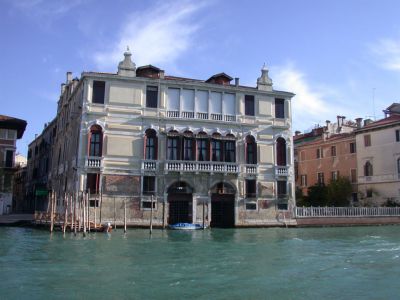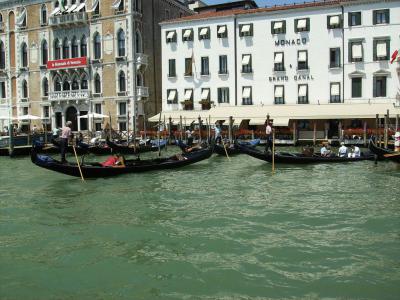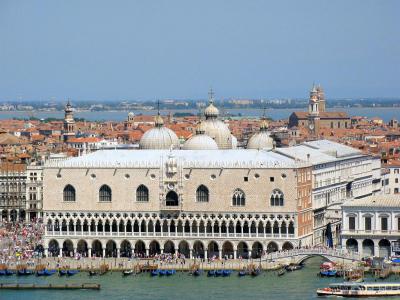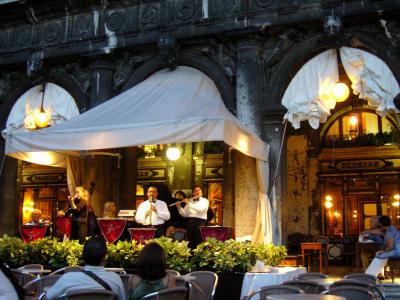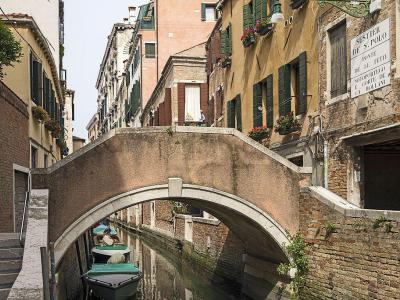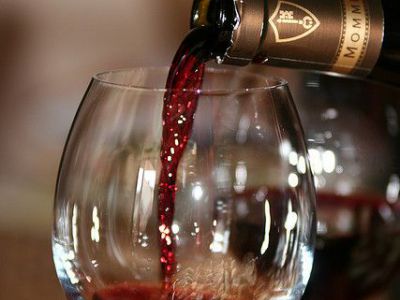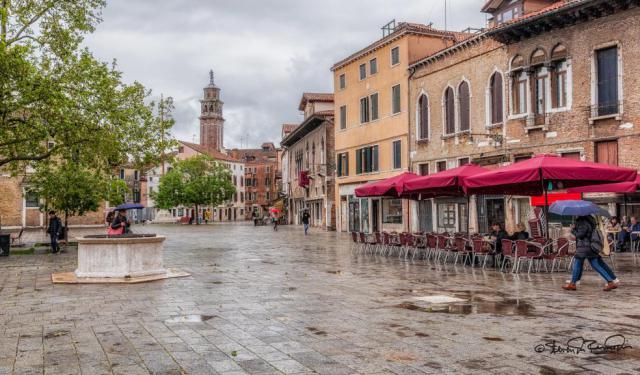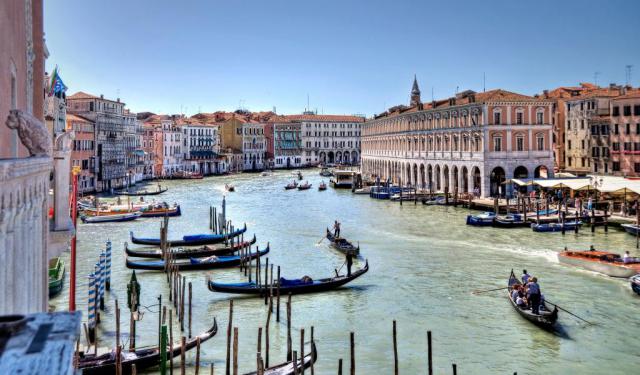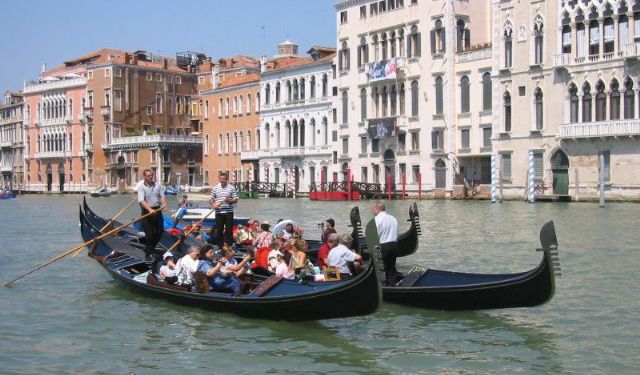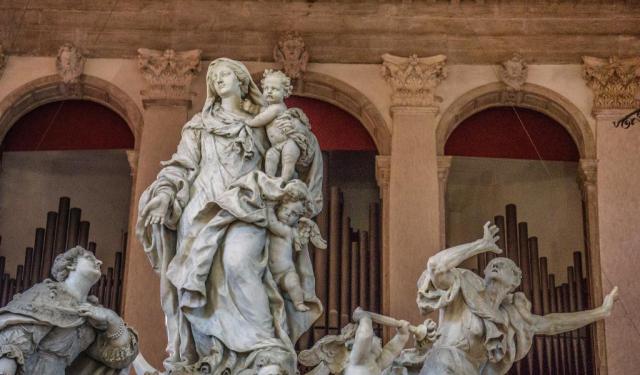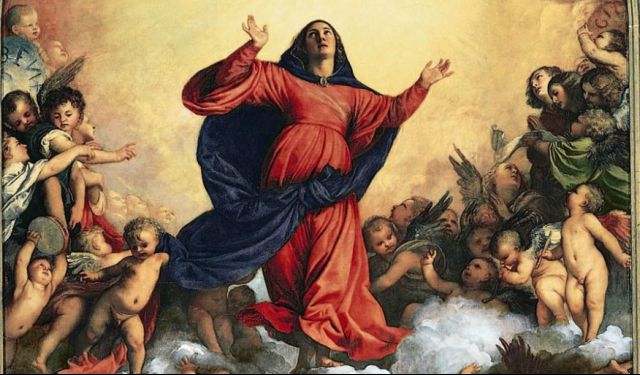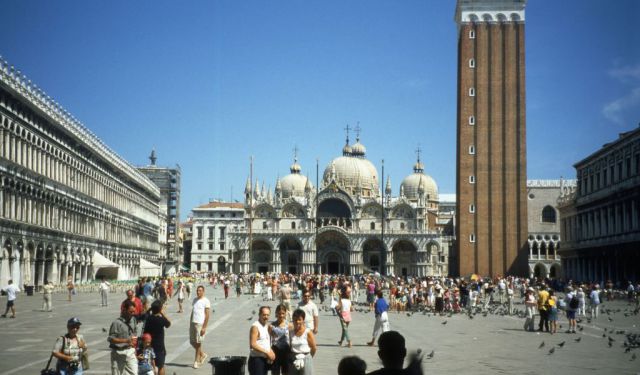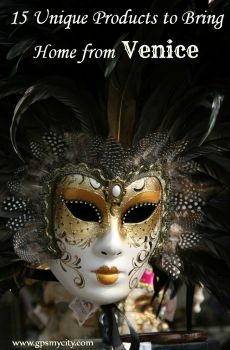Casanova's Venice (Self Guided), Venice
One of Venice's most famous personalities, Giacomo Casanova is remembered today as a womanizer, but was much more than that. Born in a family of theater actors in 1725, he came through as highly intellectual and very sharp from his very childhood, having become in his time an erudite scholar, a diplomat and spy, and a metropolitan ‘avant la lettre’, who frequented the high society and seduced women when opportunities presented themselves. His method was as simple as it was effective: he would study a woman, going along with her moods and finding out what was missing in her life, then providing it. He was the Ideal Lover.
He tried other things too: at one point he wanted to be Pope; at another point – a musician, but his main passions were women, gambling, writing, and alchemy. Above all, Casanova was a great salesman and risk-taker, and that may account for most of his actual successes in love.
This self-guided walk will show you the places of great significance in the life of Casanova, starting with his family’s house on Calle Malipiero (near Palazzo Grassi), the nearby house where he was actually born, and the parish church where he was baptized one year later.
There are many places Casanova used to frequent in the city, among which the historic Caffe Florian (where he used to meet or pick up ladies), the Ponte delle Tette (where he would procure topless ladies), or the Calle Vallaresso – once a gambling haven that provided many opportunities to socialize, flirt, and make new connections.
You will also get to see the fine Palazzo Malipiero where Casanova spent some of the best of times, and, by contrast, the Palazzo Ducale, where he barely survived in utterly deplorable conditions.
Follow this self-guided, dedicated walking tour to be plunged into Casanova's adventurous time in Venice.
Getting to Sight #1. The first tour stop (Calle Malipiero) can be reached by: Water Bus: 1, 2, 2/, N
He tried other things too: at one point he wanted to be Pope; at another point – a musician, but his main passions were women, gambling, writing, and alchemy. Above all, Casanova was a great salesman and risk-taker, and that may account for most of his actual successes in love.
This self-guided walk will show you the places of great significance in the life of Casanova, starting with his family’s house on Calle Malipiero (near Palazzo Grassi), the nearby house where he was actually born, and the parish church where he was baptized one year later.
There are many places Casanova used to frequent in the city, among which the historic Caffe Florian (where he used to meet or pick up ladies), the Ponte delle Tette (where he would procure topless ladies), or the Calle Vallaresso – once a gambling haven that provided many opportunities to socialize, flirt, and make new connections.
You will also get to see the fine Palazzo Malipiero where Casanova spent some of the best of times, and, by contrast, the Palazzo Ducale, where he barely survived in utterly deplorable conditions.
Follow this self-guided, dedicated walking tour to be plunged into Casanova's adventurous time in Venice.
Getting to Sight #1. The first tour stop (Calle Malipiero) can be reached by: Water Bus: 1, 2, 2/, N
How it works: Download the app "GPSmyCity: Walks in 1K+ Cities" from Apple App Store or Google Play Store to your mobile phone or tablet. The app turns your mobile device into a personal tour guide and its built-in GPS navigation functions guide you from one tour stop to next. The app works offline, so no data plan is needed when traveling abroad.
Casanova's Venice Map
Guide Name: Casanova's Venice
Guide Location: Italy » Venice (See other walking tours in Venice)
Guide Type: Self-guided Walking Tour (Sightseeing)
# of Attractions: 9
Tour Duration: 2 Hour(s)
Travel Distance: 4.5 Km or 2.8 Miles
Author: DanaOffice
Sight(s) Featured in This Guide:
Guide Location: Italy » Venice (See other walking tours in Venice)
Guide Type: Self-guided Walking Tour (Sightseeing)
# of Attractions: 9
Tour Duration: 2 Hour(s)
Travel Distance: 4.5 Km or 2.8 Miles
Author: DanaOffice
Sight(s) Featured in This Guide:
- Calle Malipiero (Casanova Family House)
- Calle de Muneghe (Giacomo Casanova's birthplace)
- Chiesa di San Samuele (Church of St. Samuel)
- Palazzo Malipiero (Malipiero Palace)
- Calle Vallaresso (Hotel Monaco & Grand Canal)
- Palazzo Ducale (Doge's Palace)
- Caffe Florian
- Ponte delle Tette (Bridge of the Tits)
- Cantina do Spade
1) Calle Malipiero (Casanova Family House)
Giacomo Casanova, born in 1725, had an intriguing family background. While his mother was an actress and his purported father a dancer, it is believed that his true father was the aristocratic Grimani, who owned the San Samuele Theatre.
Locating the Casanova family house on Calle Malipiero might prove to be a challenge, as it takes you off the typical tourist path and into the winding backstreets of Venice. In his early years, Casanova resided with his brother and two sisters on this tranquil street until his ninth birthday, when he was sent to a boarding house in Padua on the mainland. He would later commute between Venice and Padua to pursue his law studies at the university, completing them by the age of 14.
Following the passing of his grandmother and with his own mother preoccupied with her acting career and love affairs in Poland, Giacomo found himself eventually evicted from his childhood home when the Grimanis sold the family estate. With the proceeds from the sale, the now 18-year-old embarked on a different path and joined the priesthood on the island of Murano, seeking solace away from the captivating allure of women that had already begun to stir his passions.
Locating the Casanova family house on Calle Malipiero might prove to be a challenge, as it takes you off the typical tourist path and into the winding backstreets of Venice. In his early years, Casanova resided with his brother and two sisters on this tranquil street until his ninth birthday, when he was sent to a boarding house in Padua on the mainland. He would later commute between Venice and Padua to pursue his law studies at the university, completing them by the age of 14.
Following the passing of his grandmother and with his own mother preoccupied with her acting career and love affairs in Poland, Giacomo found himself eventually evicted from his childhood home when the Grimanis sold the family estate. With the proceeds from the sale, the now 18-year-old embarked on a different path and joined the priesthood on the island of Murano, seeking solace away from the captivating allure of women that had already begun to stir his passions.
2) Calle de Muneghe (Giacomo Casanova's birthplace)
It is believed by scholars that Giacomo Casanova was actually born in the house on Calle de le Muneghe, where his grandmother, Marzia, resided. This contradicts previous claims that he was born on Calle de la Comedia (now Calle Malipiero). During their first year of marriage, Giacomo's parents likely lived at No. 2993 on Calle de le Muneghe before leaving for theatrical work in London in 1726, leaving their one-year-old son in the care of his grandmother. Years later, as a 17-year-old, Casanova would tend to his beloved grandmother's illness until her passing in the same house on Calle de le Muneghe.
3) Chiesa di San Samuele (Church of St. Samuel)
Sain't Samuel's church is strategically located in the small square of the same name, between the Grassi and Malipiero palaces, making it one of the rare churches in Venice that offers a view of the Grand Canal.
Known for housing relics attributed to the biblical Samuel, this church stands out for being one of the few in Venice dedicated to an Old Testament prophet instead of a Roman Catholic saint. Its late-Gothic apse, despite the renovations of its nave and facade in 1685, has remarkably remained intact. The walls and vaults of the apse underwent restoration work starting in 1999 and feature a precious fresco cycle from the early Venetian Renaissance, making them a rare surviving example.
The impressive bell tower, constructed with white Istrian stone, stands at a height of thirty meters and is considered one of the most beautiful in Venice, even though it is partially integrated into a neighboring building.
While San Samuele is still an active place of worship, it can be challenging to find it open to the public. A favorable opportunity to visit may arise during the Biennale, when the church showcases additional exhibits beyond its significant historical and religious treasures.
***CASANOVA TOUR***
This parish church holds significant importance in the life of Giacomo Casanova. It is where his parents exchanged vows in 1724 and where he was baptized one year later. As a child, Giacomo attended church services here, and during his teenage years, he was assigned to the church where he immersed himself in advanced classes on the Italian language and poetry taught by Abbot Schiavo.
On February 14, 1740, just before his 15th birthday, Giacomo underwent a tonsure ceremony performed by the Patriarch of Venice, symbolizing his humility. Soon after, he delighted the churchgoers by delivering his first sermon at San Samuele. However, despite his involvement in religious matters, his allure for the secular world, including women, outweighed his interest in Latin texts and theological puzzles. He saw no reason to choose between the love of God and the love of women. Before long, a thick thatch of hair or wig obscured his priestly tonsure, and his cascades of passion continued unabated. Eventually, while delivering his second sermon, influenced by wine consumed in the company of aristocrats, he forgot his words and fainted on the floor, bringing shame upon himself. Disgraced, he renounced his religious aspirations and fled to Padua, where he diligently pursued his studies and earned a law degree.
Known for housing relics attributed to the biblical Samuel, this church stands out for being one of the few in Venice dedicated to an Old Testament prophet instead of a Roman Catholic saint. Its late-Gothic apse, despite the renovations of its nave and facade in 1685, has remarkably remained intact. The walls and vaults of the apse underwent restoration work starting in 1999 and feature a precious fresco cycle from the early Venetian Renaissance, making them a rare surviving example.
The impressive bell tower, constructed with white Istrian stone, stands at a height of thirty meters and is considered one of the most beautiful in Venice, even though it is partially integrated into a neighboring building.
While San Samuele is still an active place of worship, it can be challenging to find it open to the public. A favorable opportunity to visit may arise during the Biennale, when the church showcases additional exhibits beyond its significant historical and religious treasures.
***CASANOVA TOUR***
This parish church holds significant importance in the life of Giacomo Casanova. It is where his parents exchanged vows in 1724 and where he was baptized one year later. As a child, Giacomo attended church services here, and during his teenage years, he was assigned to the church where he immersed himself in advanced classes on the Italian language and poetry taught by Abbot Schiavo.
On February 14, 1740, just before his 15th birthday, Giacomo underwent a tonsure ceremony performed by the Patriarch of Venice, symbolizing his humility. Soon after, he delighted the churchgoers by delivering his first sermon at San Samuele. However, despite his involvement in religious matters, his allure for the secular world, including women, outweighed his interest in Latin texts and theological puzzles. He saw no reason to choose between the love of God and the love of women. Before long, a thick thatch of hair or wig obscured his priestly tonsure, and his cascades of passion continued unabated. Eventually, while delivering his second sermon, influenced by wine consumed in the company of aristocrats, he forgot his words and fainted on the floor, bringing shame upon himself. Disgraced, he renounced his religious aspirations and fled to Padua, where he diligently pursued his studies and earned a law degree.
4) Palazzo Malipiero (Malipiero Palace)
Clearly fancying the good life, the young Casanova forged a friendship with Senator Malipiero, an aristocrat who called the Malipiero Palace his home. From 1740 onwards, he lived in the grandiose Palazzo, where he learned about fine food and fine wines, as well as how to conduct himself in high society. Within the walls of this renowned Venetian residence, he established relationships with influential individuals who held insider knowledge of the city's affairs, and with a great many fashionable ladies "who lived their lives to the full".
During this transformative period, Casanova's carnal knowledge of the opposite sex was initiated by two sisters, Nanetta and Marta, who were 14 and 16 years old, respectively. Casanova felt himself falling in love with both and claimed his lifetime pursuit of women was rooted in this early encounter. The experience certainly emboldened him to venture deeper into society. Venetian women had a style all their own, which drew outsiders to their seductive, playful, fiery style. They dyed their hair many shades of blond, wore elaborate makeup, and regarded their admirers with a provocative expression, daring them to try their luck.
After being caught, in flagrante delicto, "dallying" with Senator Malipiero's young protégé, Teresa Imer, Casanova was banished from the Palazzo in 1742. Humiliated, he had to endure another dislocation when the priests supervising his education transferred him to a seminary, thus again preventing him from falling prey to the snares of the world. Nine days after arriving at the seminary, Casanova was dismissed for being found in bed with a young boy. While he seems to have been innocent on that occasion, in the years to come he would not deny himself the occasional homosexual adventure.
During this transformative period, Casanova's carnal knowledge of the opposite sex was initiated by two sisters, Nanetta and Marta, who were 14 and 16 years old, respectively. Casanova felt himself falling in love with both and claimed his lifetime pursuit of women was rooted in this early encounter. The experience certainly emboldened him to venture deeper into society. Venetian women had a style all their own, which drew outsiders to their seductive, playful, fiery style. They dyed their hair many shades of blond, wore elaborate makeup, and regarded their admirers with a provocative expression, daring them to try their luck.
After being caught, in flagrante delicto, "dallying" with Senator Malipiero's young protégé, Teresa Imer, Casanova was banished from the Palazzo in 1742. Humiliated, he had to endure another dislocation when the priests supervising his education transferred him to a seminary, thus again preventing him from falling prey to the snares of the world. Nine days after arriving at the seminary, Casanova was dismissed for being found in bed with a young boy. While he seems to have been innocent on that occasion, in the years to come he would not deny himself the occasional homosexual adventure.
5) Calle Vallaresso (Hotel Monaco & Grand Canal)
Calle Vallaresso is a street next to Saint Mark's Square where, for centuries, a large number of gambling houses had sprung up. Casanova frequented the street since, for a profligate and a spendthrift such as himself, gambling was an easy way to revive his fortunes and came along with many opportunities to socialize, flirt, and establish new connections.
Among all the gambling venues, Casanova's favorite spot for a thrilling card game – as well the ideal backdrop for his conquests – is now the lavishly decorated "Grand Ballroom" of the Hotel Monaco & Grand Canal. Previously known as "Il Ridotto," this establishment was a prominent gambling house until 1774, when it was permanently closed by the reformer Giorgio Pisani. Adorned with gilded leathers, this lavish setting welcomed nobles, or indeed anyone wearing a mask (baùta), at the gaming tables.
When games were played strictly according to the rules, however, the house (or bank) had practically no advantage, so in time Il Ridotto and other gambling establishments devised subtle ways to dupe the punters. This was precisely what happened to Casanova, who had experienced his fair share of losses, succumbing to Il Ridotto's clever tactics. Interestingly, at one point, he himself managed a small casino in collaboration with a wealthy patron.
Among all the gambling venues, Casanova's favorite spot for a thrilling card game – as well the ideal backdrop for his conquests – is now the lavishly decorated "Grand Ballroom" of the Hotel Monaco & Grand Canal. Previously known as "Il Ridotto," this establishment was a prominent gambling house until 1774, when it was permanently closed by the reformer Giorgio Pisani. Adorned with gilded leathers, this lavish setting welcomed nobles, or indeed anyone wearing a mask (baùta), at the gaming tables.
When games were played strictly according to the rules, however, the house (or bank) had practically no advantage, so in time Il Ridotto and other gambling establishments devised subtle ways to dupe the punters. This was precisely what happened to Casanova, who had experienced his fair share of losses, succumbing to Il Ridotto's clever tactics. Interestingly, at one point, he himself managed a small casino in collaboration with a wealthy patron.
6) Palazzo Ducale (Doge's Palace) (must see)
Built on the foundations of a 9th-century fortress, this palace is unquestionably the finest secular European building of its time. Over the course of centuries, it has served many purposes, including Doge residence, seat of the Venetian government, court of law, civil office, and even a prison.
First built in the 14th century, much of the edifice was destroyed by fire in the 16th century, reducing to ashes most of the art treasures held inside. Some of the greatest Venetian masters of the time, such as Tintoretto, Veronese, Titian, Bellini, and Tiepolo, contributed to the restoration efforts, recreating gilded stucco, sculptures, frescoes, and canvases that returned the palace to its former glory.
Externally, the palace exhibits a blend of Byzantine and Gothic architectural styles, while the interior exudes Classical elements, leading art critic John Ruskin to proclaim it "the central building of the world". Inside, visitors are treated to a lavish display of furnishings, paintings, and elaborately adorned ceilings. Of notable grandeur is the Grand Council chamber, featuring Tintoretto's monumental "Paradise", reputedly the largest oil painting in the world. Equally magnificent is the Sala dello Scrutinio, or "Voting Hall," adorned with paintings depicting Venice's glorious past.
In stark contrast, the opposite side of the canal reveals the grim remnants of medieval justice-the prison cells. Linked to the outside world by the Bridge of Sighs ("Ponte dei Sospiri"), these cells serve as a haunting reminder of the horrors endured by prisoners who faced torture and potential death at the hands of the city's appointed state inquisitors. The term "sighs" refers to the lamentations of countless victims forced across the bridge.
To get the most of your time at the Doge's Palace, consider using the infrared audio guide available at the entrance, which provides a captivating narrative of the 1,000-year-old maritime republic of Venice and the intricacies of its former government.
***CASANOVA TOUR***
At the age of 30, on the fateful night of 25 July 1755, Casanova found himself arrested, accused of offending religion and common decency. Shockingly, he was sentenced to five years of imprisonment without even being granted a trial. His confinement took place in the Doge's Palace, where he was confined to a cell beneath the lead-covered roof. In the sweltering summer months, the oppressive heat turned his place of incarceration into an unbearable oven, further exacerbated by the torment of countless fleas infesting the premises.
Physically, Casanova was not far from the opulence of Venice and the seat of power, yet the psychological distance between his confinement and the world outside was immeasurable. Enduring 15 months of torment and despair, he finally hatched a daring plan to escape. Creating a hole in the ceiling, he ingeniously fashioned ropes from bed sheets and descended to freedom. This remarkable escape made Casanova the only person ever to break free from the prison of the Doge's Palace. Seeking sanctuary, he first sought refuge in Munich, then continued his journey to Strasbourg, eventually concluding his odyssey by coach to Paris, where he would start a new life.
Tip:
Make sure to book in advance for the guided "Secret Itinerary" tour – an exclusive experience grants access to otherwise restricted quarters and hidden passageways, including the Doge's private chambers, the interrogation rooms where prisoners were questioned, and the two cells once occupied by Casanova.
First built in the 14th century, much of the edifice was destroyed by fire in the 16th century, reducing to ashes most of the art treasures held inside. Some of the greatest Venetian masters of the time, such as Tintoretto, Veronese, Titian, Bellini, and Tiepolo, contributed to the restoration efforts, recreating gilded stucco, sculptures, frescoes, and canvases that returned the palace to its former glory.
Externally, the palace exhibits a blend of Byzantine and Gothic architectural styles, while the interior exudes Classical elements, leading art critic John Ruskin to proclaim it "the central building of the world". Inside, visitors are treated to a lavish display of furnishings, paintings, and elaborately adorned ceilings. Of notable grandeur is the Grand Council chamber, featuring Tintoretto's monumental "Paradise", reputedly the largest oil painting in the world. Equally magnificent is the Sala dello Scrutinio, or "Voting Hall," adorned with paintings depicting Venice's glorious past.
In stark contrast, the opposite side of the canal reveals the grim remnants of medieval justice-the prison cells. Linked to the outside world by the Bridge of Sighs ("Ponte dei Sospiri"), these cells serve as a haunting reminder of the horrors endured by prisoners who faced torture and potential death at the hands of the city's appointed state inquisitors. The term "sighs" refers to the lamentations of countless victims forced across the bridge.
To get the most of your time at the Doge's Palace, consider using the infrared audio guide available at the entrance, which provides a captivating narrative of the 1,000-year-old maritime republic of Venice and the intricacies of its former government.
***CASANOVA TOUR***
At the age of 30, on the fateful night of 25 July 1755, Casanova found himself arrested, accused of offending religion and common decency. Shockingly, he was sentenced to five years of imprisonment without even being granted a trial. His confinement took place in the Doge's Palace, where he was confined to a cell beneath the lead-covered roof. In the sweltering summer months, the oppressive heat turned his place of incarceration into an unbearable oven, further exacerbated by the torment of countless fleas infesting the premises.
Physically, Casanova was not far from the opulence of Venice and the seat of power, yet the psychological distance between his confinement and the world outside was immeasurable. Enduring 15 months of torment and despair, he finally hatched a daring plan to escape. Creating a hole in the ceiling, he ingeniously fashioned ropes from bed sheets and descended to freedom. This remarkable escape made Casanova the only person ever to break free from the prison of the Doge's Palace. Seeking sanctuary, he first sought refuge in Munich, then continued his journey to Strasbourg, eventually concluding his odyssey by coach to Paris, where he would start a new life.
Tip:
Make sure to book in advance for the guided "Secret Itinerary" tour – an exclusive experience grants access to otherwise restricted quarters and hidden passageways, including the Doge's private chambers, the interrogation rooms where prisoners were questioned, and the two cells once occupied by Casanova.
7) Caffe Florian
Established in 1720 by Florian Francesconi and lauded by Napoleon as "one of the world's most beautiful drawing rooms", Caffè Florian holds the distinction of being the oldest continuously operating coffee house in Italy and the second oldest in the world (after Café Procope in Paris). Due to its prestigious position, it is almost a symbol of Venice; the meeting place of artists and poets, writers and politicians, including Wagner, Goethe, and Lord Byron. Casanova, known for his keen interest in pursuing connections with women, particularly favored the establishment, largely due to the fact that it was one of the first in Venice to allow women entry-an opportunity he eagerly embraced in his romantic endeavors.
Here, immersed in a rich local history, one can enjoy an amazing range of cakes and coffees, albeit at a higher price point, served by elegantly attired waiters at small marble tables for two. The experience is undeniably delightful, particularly when the resident musicians serenade the patrons (one of the primary reasons for choosing this café); however, be aware that an additional €6 per person will be added to your bill during musical performances. The ambiance is tranquil and inviting, aside from the occasional visits from birds that may seek some attention. You can even make song requests to the musicians or admire the art exhibitions within the cafe's walls.
Here, immersed in a rich local history, one can enjoy an amazing range of cakes and coffees, albeit at a higher price point, served by elegantly attired waiters at small marble tables for two. The experience is undeniably delightful, particularly when the resident musicians serenade the patrons (one of the primary reasons for choosing this café); however, be aware that an additional €6 per person will be added to your bill during musical performances. The ambiance is tranquil and inviting, aside from the occasional visits from birds that may seek some attention. You can even make song requests to the musicians or admire the art exhibitions within the cafe's walls.
8) Ponte delle Tette (Bridge of the Tits)
Ponte delle Tette, a small bridge in the heart of Venice's former Red Light district of San Cassiano, holds a peculiar history. It earned its intriguing name, "Bridge of the Tits", due to its association with a unique practice from the past. During that time, prostitutes would gather on the bridge and openly display their bare chests, aiming to attract potential clients and convert suspected homosexuals. This particular procedure was encouraged by Venetian authorities as a means to address what they perceived as a new social issue.
Going the extra mile in its role of diverting men from "sin against nature", the Republic of Venice allowed prostitutes to use lanterns to illuminate their breasts at night, while also occasionally paying them to stand in a line across the bridge with breasts exposed (such display had the extra motivation of excluding transvestite prostitutes).
The Red Light district in Venice was officially sanctioned in the early 16th century, providing a regulated space for such activities. Casanova was said to be a frequent visitor, actively seeking his next victim.
Going the extra mile in its role of diverting men from "sin against nature", the Republic of Venice allowed prostitutes to use lanterns to illuminate their breasts at night, while also occasionally paying them to stand in a line across the bridge with breasts exposed (such display had the extra motivation of excluding transvestite prostitutes).
The Red Light district in Venice was officially sanctioned in the early 16th century, providing a regulated space for such activities. Casanova was said to be a frequent visitor, actively seeking his next victim.
9) Cantina do Spade
A tavern dating back to the 15th century, Cantina do Spade holds a special place in Venetian history and is even mentioned in Casanova's memoirs. Tucked away in a dimly lit alley near the iconic Rialto Bridge, it was once at the very heart of Venice's Red Light district – an area Casanova knew only too well. Here is where he wined and dined his romantic conquests – especially the beautiful courtesans, though he would probably not recognize the place of his assignations, since nowadays it is quite modern internally and the historical aspects are barely recognized.
The venue is known for its beloved 'cicchetti', a variety of small snacks that perfectly complement the selection of wines available. From savory fried seafood to spicy "picante pani," there is a delightful range of flavors to explore. Don't miss the creamy salt cod known as "baccalà mantecato" or the crispy fried mozzarella known as "mozzarella in carroza" – both are local favorites. The friendly service, generous portions, and reasonable prices make it a place you may find yourself returning to for more.
Tip:
To ensure a seamless dining experience, it is highly recommended to make a reservation in advance.
The venue is known for its beloved 'cicchetti', a variety of small snacks that perfectly complement the selection of wines available. From savory fried seafood to spicy "picante pani," there is a delightful range of flavors to explore. Don't miss the creamy salt cod known as "baccalà mantecato" or the crispy fried mozzarella known as "mozzarella in carroza" – both are local favorites. The friendly service, generous portions, and reasonable prices make it a place you may find yourself returning to for more.
Tip:
To ensure a seamless dining experience, it is highly recommended to make a reservation in advance.
Walking Tours in Venice, Italy
Create Your Own Walk in Venice
Creating your own self-guided walk in Venice is easy and fun. Choose the city attractions that you want to see and a walk route map will be created just for you. You can even set your hotel as the start point of the walk.
Dorsoduro Walking Tour
One of the six districts of Venice, Dorsoduro’s name translates as “hard bridge” due to the area's relatively high terrain. Home to some of the city’s highest spots, it also comprises some of Venice’s most picturesque canals, historic locations and cultural venues, including the Basilica di Santa Maria della Salute; the Gallerie dell’ Academia & the Ca’ Rezzonico – both... view more
Tour Duration: 1 Hour(s)
Travel Distance: 2.1 Km or 1.3 Miles
Tour Duration: 1 Hour(s)
Travel Distance: 2.1 Km or 1.3 Miles
Venice Introduction Walking Tour
Although most experts agree that the Venetian lagoon emerged nearly 6,000 years ago, the area of today's Venice remained mostly uninhabited, except for a small population of fishermen, up until the 5th century AD when the hordes of Gothic barbarians, looting their way into Rome, drove many a people away from their homes on the mainland to take refuge on the coastal Venetian islands.
Those... view more
Tour Duration: 3 Hour(s)
Travel Distance: 4.1 Km or 2.5 Miles
Those... view more
Tour Duration: 3 Hour(s)
Travel Distance: 4.1 Km or 2.5 Miles
Grand Canal Walking Tour
The main waterway in Venice, Grand Canal snakes in an "S" shape through the center of the city, dividing its main districts. On both sides of this thoroughfare are the most beautiful buildings dating from the 12th to the 18th centuries that tell the story of a thousand years of Venetian splendor. While one can view the architectural parade from water buses, our self-guided walking tour... view more
Tour Duration: 3 Hour(s)
Travel Distance: 5.2 Km or 3.2 Miles
Tour Duration: 3 Hour(s)
Travel Distance: 5.2 Km or 3.2 Miles
Venice's Hidden Art Treasures
Among the first things springing to mind when talking about Venice, apart from the canals and gondolas, of course, is Art and Architecture. Indeed, Venice is one of the few cities in the world where Art and Architecture have merged in a stunning multiplicity of forms. The city is even renowned for its unique (Venetian) pictorial school famed by the likes of Tintoretto, Titian, Veronese, Castagno... view more
Tour Duration: 2 Hour(s)
Travel Distance: 3.6 Km or 2.2 Miles
Tour Duration: 2 Hour(s)
Travel Distance: 3.6 Km or 2.2 Miles
Titian's Paintings Walk
One of the greatest painters of all time, Tiziano Vecelli – better known as Titian – was a pioneering figure of the Venetian school of Italian Renaissance painting. His career was successful from the start, and he became sought after by patrons, initially from Venice and its possessions, then joined by the north Italian princes, and finally the Habsburgs and papacy.
Equally adept with... view more
Tour Duration: 2 Hour(s)
Travel Distance: 3.6 Km or 2.2 Miles
Equally adept with... view more
Tour Duration: 2 Hour(s)
Travel Distance: 3.6 Km or 2.2 Miles
Piazza San Marco Walking Tour
All of Venice’s roads seem to run into Piazza San Marco – the commercial, religious, and political heart of the city. With a glowing reputation as one of the finest squares in the world and arguably one of Europe’s primary tourist attractions, it certainly has a lot to offer to visitors.
Start your exploration with a tour of the pink-and-white marble Palazzo Ducale, which takes you... view more
Tour Duration: 1 Hour(s)
Travel Distance: 0.6 Km or 0.4 Miles
Start your exploration with a tour of the pink-and-white marble Palazzo Ducale, which takes you... view more
Tour Duration: 1 Hour(s)
Travel Distance: 0.6 Km or 0.4 Miles
Useful Travel Guides for Planning Your Trip
15 Distinctively Italian Things to Buy in Venice
Venice has been a tourist mecca for over a century now, with millions of visitors flocking in every year to see this unique place on the face of the Earth. Many, if not all, of these people seek to obtain something memorable as a token of their stay in this city. By far, not all of them know which...
The Most Popular Cities
/ view all
